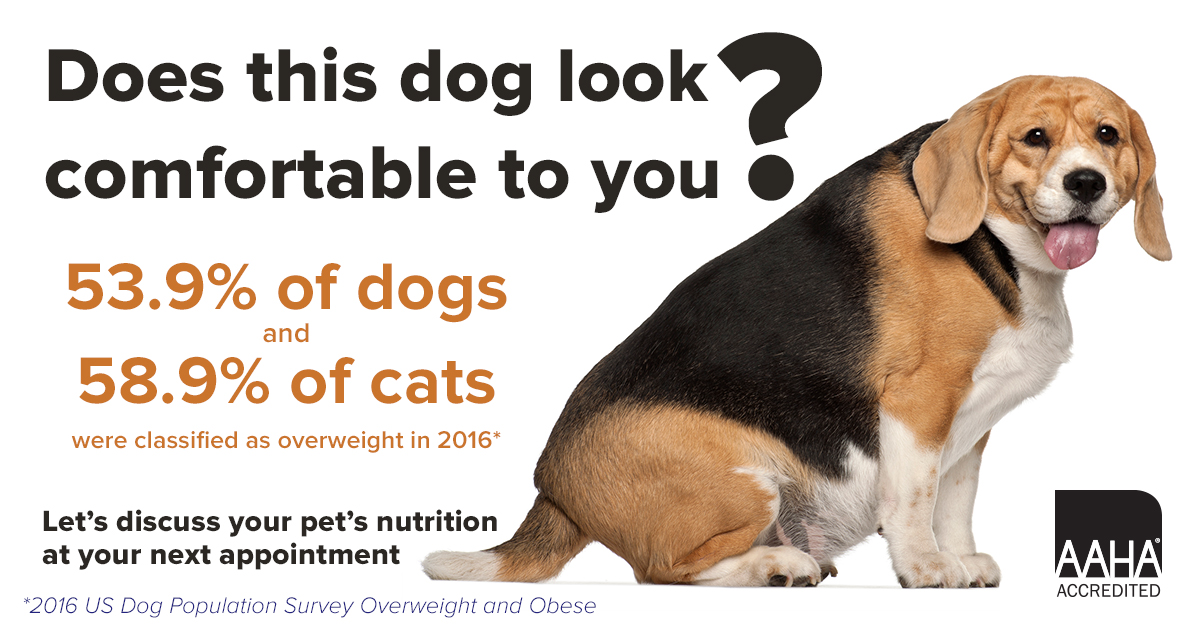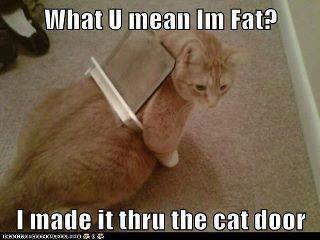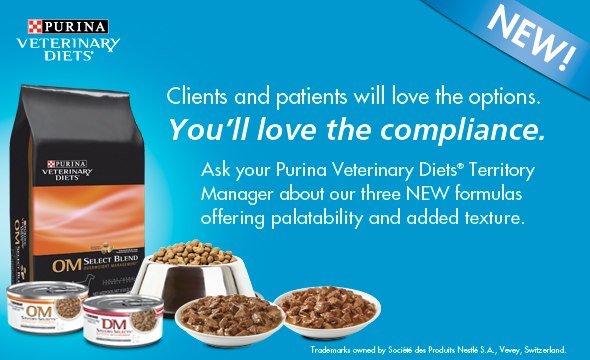
Obesity is just as dangerous for pets as it is for humans. The extra pounds weigh on an animal’s cardiovascular and respiratory systems, exacerbating existing problems and causing new ones. Fat cats and dogs are also prone to injury, more at risk in surgery, and predisposed to conditions such as diabetes. And the laundry list of problems doesn’t end there. Decreased stamina, diminished immune function, and digestive disorders are all potential consequences of obesity. Being severely overweight can significantly diminish your cat or dog’s quality of life. So when your porky pet pleads with you for an extra treat, remember that saying “no” may be the kindest response.
So monitor your dog’s weight. You probably won’t convince him to step on the scale each morning, but you can periodically give him a quick examination. Here’s how. First, run your hand along your dog’s side, as if you are petting him. Pressing gently, you should be able to count your dog’s ribs as your run your hand over him. Then look at your dog objectively. When viewed from above, does his body angle in in front of his hips, or has he lost his waist? If these simple tests make you suspect that your pup is getting porky, take him to the veterinarian for a proper examination.
This Pet Obesity Prevention website is very helpful to prevent this?!?!
Excess weight in cats is a cruel killer. Type II diabetes, debilitating liver disease and crippling arthritis are only a trio of the possible options you’re predisposing [your cat] to. So by feeding your cat more calories than he needs, you’re effectively causing him needless pain and putting him at high risk of potentially life-ending disease.

Maintaining a Healthy Weight
Dog owners can take several different steps to help control their dog’s weight.
The first is to cut back on treats and snacks. These are generally high in calories and may contribute to weight gain.
The second step can be to feed less of the regular dog food. This usually means measuring the amount of food that’s put into the dog’s dish to prevent the serving size from increasing over time. Remember that the suggesting serving amount on the package of dog food is a guideline based on average dogs. An individual dog may need less, or more, than the average amount.
Third, owners can increase a dog’s exercise with additional walks or playtime each day. This may help the owner as well as the dog, and has the additional benefit of increasing the amount of time the dog and owner spend together.
Finally, a dog owner could consider switching to a low-calorie food. These products are designed to allow an owner to serve a nice-size portion while still reducing the calories the dog eats. It is always a good idea to consult with a veterinarian before putting a dog on a weight-loss program. The veterinarian can help tailor a weight-loss program for an individual dog and can track progress and help troubleshoot along the way.
We can help you get your pet back on the right weight management program – just contact us or drop in – feel free to use our scales to monitor your pet’s progress at any time – best of luck slimming down.
For a Pet Weight Loss Program click here Project Pet Slim Down

